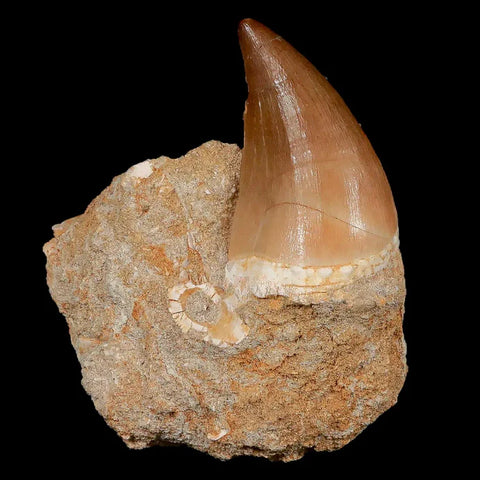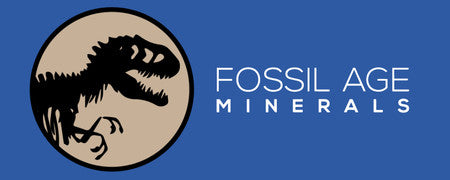Introduction
The mosasaurus was one of the most fearsome marine reptiles to ever inhabit the seas during the late Cretaceous period, around 70-66 million years ago. As a member of the mosasauridae family, the mosasaurus has gone down in history as one of the largest known mosasaurs, growing up to 56 feet long. What makes mosasaurus fossils special is that complete skeletons are exceptionally rare. Most fossil discoveries consist of fragments rather than full specimens. This makes mosasaurus dinosaur fossils highly sought after by collectors looking to add extraordinary centerpieces to any dinosaur collection.

Classification
The mosasaurus belongs to the Squamata order, which contains all lizards and snakes. More specifically, it is placed in the Mosasauridae family of the mosasaur suborder. Mosasaurs were aquatic or marine lizards that thrived during the Late Cretaceous period. They went extinct around 66 million years ago during the mass extinction event that killed off dinosaurs.
The mosasaurus is further classified into the mosasaurus genus. Fossil discoveries have revealed several mosasaurus species, including M. Hoffmannii, M. Lemonnieri, M. Missouriensis, and M. Conodon. Other genera of mosasaurs include Tylosaurus, Plesiotylosaurus, and Plotosaurus. Though different, they all shared adaptations for an aquatic lifestyle.
Anatomy
Mosasaurs like the mosasaurus had a streamlined, hydrodynamic body well-suited for an aquatic lifestyle. They had paddle-like limbs and a powerful, crescent-shaped tail for swimming. Their streamlined form reduced drag and allowed them to swiftly pursue prey in water. Mosasaurs also had a unique ball-and-socket joint in their skulls which allowed them to rapidly open their jaws and eat prey while swimming.
Mosasaurus was one of the biggest mosasaur species, and they could grow beyond 50 feet. One specimen was found in the Netherlands measuring 56 feet in length. These loggerheads wielded robust, canine-type conical teeth suitable for capturing fish, squid, seabirds, plesiosaurs, and even their own peers of lower rank. Through fossils of Mosasaurus, the stomach content, which were bones of marine animals such as sea turtles and pteranodon pterosaurs, have been discovered.
Aside from their enormous size, second only to the whale shark, and set of sharp teeth, mosasaurs also had some of the key aquatic adaptations. Their limb bones were made shorter and were adapted for paddling. The fish's tail is enlarged and flattened to propel effectively through water. Unlike ichthyosaurs, which used the same means as other reptiles of spending their whole life on land, mosasaurs had the ability to give birth to live young rather than laying eggs. This helped them to become permanent residents of the depths of the aquatic world.
Behaviors
The mosasaurus was an apex predator during the Late Cretaceous. As a carnivore, it would have actively hunted smaller marine animals for food. Its jaws and teeth allowed it to easily bite down on and immobilize prey. Mosasaurs, like the mosasaurus, also had an advanced sense of smell, which aided in detecting prey.
The fossilized remains, including those of the mosasaurus, suggest that their offspring were hatched directly as opposed to being laid as eggs on shore. The ability of turtles to migrate back and forth between water and land was a key adaptation that enabled them to cut their ties with land entirely and eventually exploit the sea as well. The most likely target habitat of the more juvenile and young mosasaurs was probably relatively shallow water near the coastline. The bigger and older mosasaurs inhabited the deep waters offshore.
Mosasaurs could swim rapidly and were able to migrate great distances at any time of the year. What is remarkable is that not only did they overlap whales, but they also lived in certain latitudinal zones according to fin and body size. Not all mosasaurs were found in the deep south where it was warm; bigger ones were known to have been spotted further north in the cooler water. Elderly mosasaur species possessed the speed skills needed to colonize seas across the world.
Fossilization
Complete mosasaurus skeletons are incredibly rare because the fossilization process is highly dependent on specific conditions. When a mosasaurus died, its carcass usually sank to the seafloor. Soft tissues decomposed, while scavengers may have scattered the bones. In order for fossils to form, the bones had to be buried quickly before destruction. Mineral-rich sediments had to infiltrate the bone over time, replacing tissues and creating a fossilized copy of the original bone.
Not all mosasaurus skeletons underwent ideal fossilization. Many skeletons were broken up or destroyed by the ocean currents or scavengers. Fossils require undisturbed conditions to maintain their structure. Tumbling and erosion ruin bone integrity. As such, intact mosasaurus fossils indicate rare circumstances where deceased individuals were rapidly buried, minerals infiltrated tissues, and the skeleton remained undamaged over millions of years.
Paleontological Discoveries
The earliest mosasaurus specimen was unearthed at a limestone factory in the Netherlands, dating back to 1770. Nonetheless, it took more than a hundred years since naturalist Adriaan Gilles Camper gave mosasaurus its name and described that it was a new and vanished marine lizard until 1799.
Thereby, after many years, the remains were found in different parts of the world in marine deposits, among others, Belgium, Denmark, Sweden, Africa, New Zealand, and North America. In the USA, collected from New Jersey, Alabama, Mississippi, Texas, and Kansas are mosasaur fossils. The most accurate mosasaurus fossil that was ever discovered since the species was first found was the one that was brought from Harland County, South Central Dakota.
A mosasaurus, companion of the Mosasaurus hall of the Natural History Museum of Maastricht, in the capital of the Netherlands, also known as the capital of the ancient Roman Empire of Tungria, is one of the most famous mosasaurus fossils ever found. This fossil is about 150 million years old and was found in a chalk quarry in 1822. It is presented in the museum as a three-dimensional model for visitors' enjoyment. At 17 meters long, it is one of the largest known mosasaurus known specimens.
Other key mosasaurus fossil finds include: Other key mosasaurus fossil finds include:
- The good news is that the Tylosaurus fossil called "Jim" is on display at the Burpee Museum of Nature Science. It is an unusual discovery of a 50-foot mosasaur in Kansas state.
- Spectacular mosasaur fossil specimens were excavated in the course of a Smoky Hill Chalk deposits exploration by paleontologist Othniel Charles Marsh in the mid-1800s.
- The identification of the mosasaurus in Angola is of great importance as it denotes the first African mosasaurus fossil ever discovered.
- Fossils discovered in New Zealand point to the existence of a lizard immersed in the seas surrounding it and Zealandia.
Importance to Collections
There are three aspects that make these fossils of Mosasaurus unique and special which are the fact that they are gigantic, fearsome- looking and of the sea in ancient times. Mosasaurus skeleton is regarded among the most rare preserved fossils. No 'real' examples actually exist - they only belong to the collections of museums, libraries, and prestigious scholarly institutions. As a result, they are not accessible to private collectors at all. Whole skeletons, even individual bones have also found a delirious high demand recently.
Conclusion
For any collector, a mosasaurus dinosaur fossil would make an unmatched centerpiece to a collection. Displaying even a single skull, tooth, or limb bone can set a personal collection apart. Mosasaurs represent the pinnacle of the great marine reptiles that lived alongside dinosaurs. Their scarcity and mysterious nature in the sea make mosasaurus fossils all the more desirable.
A mosasaurus fossil conveys the untamed nature of prehistoric Earth's oceans. They capture the imagination with their massive size and lethal jaws. The rarity of intact specimens preserves their mysterious aura beneath the waves. Any collector should feel immense pride in owning even a small piece of this mighty marine predator that once dominated the seas.
Discover Amazing Prehistoric Treasures at Fossil Age Minerals
If you are looking to add a rare mosasaurus or other fossil find to your personal collection, be sure to check out the offerings at Fossil Age Minerals. Our website has an amazing selection of dinosaur fossils for sale, including authentic raptor claw fossil, fossil egg, and mosasaurus teeth. Browsing the fossils available at Fossil Age Minerals is a great way to find an exceptional centerpiece for any fossil collection that is sure to impress fellow collectors. Our website offers worldwide shipping and guarantees the authenticity of every fossil. Explore our website and unearth your own piece of pre-history.


